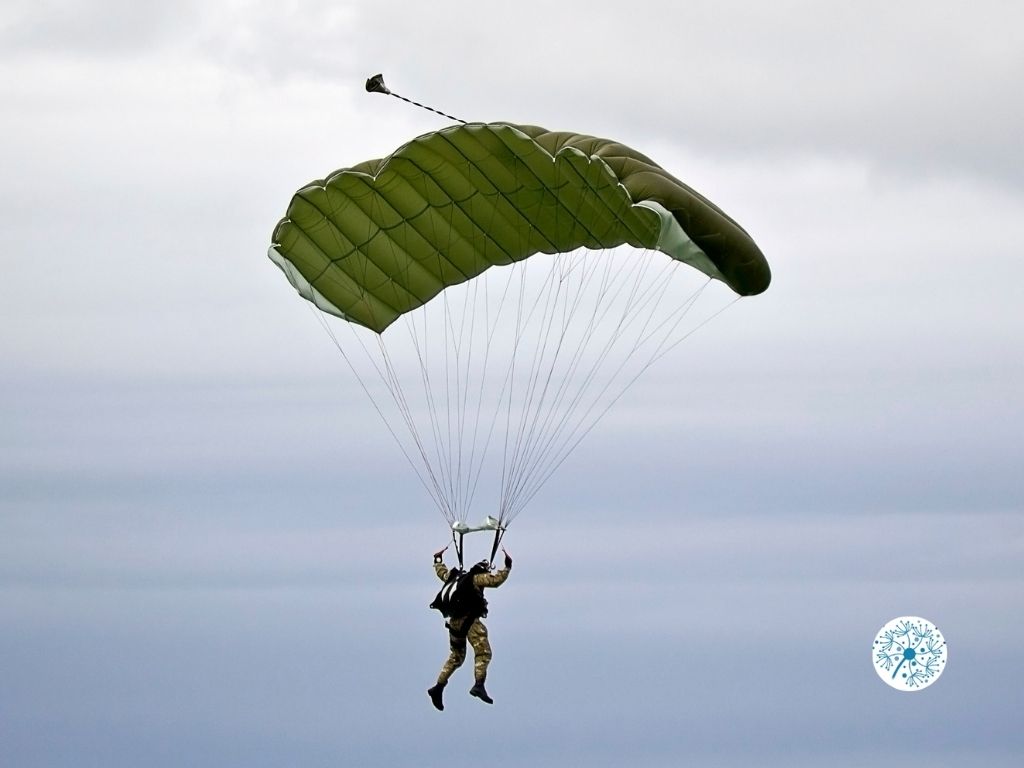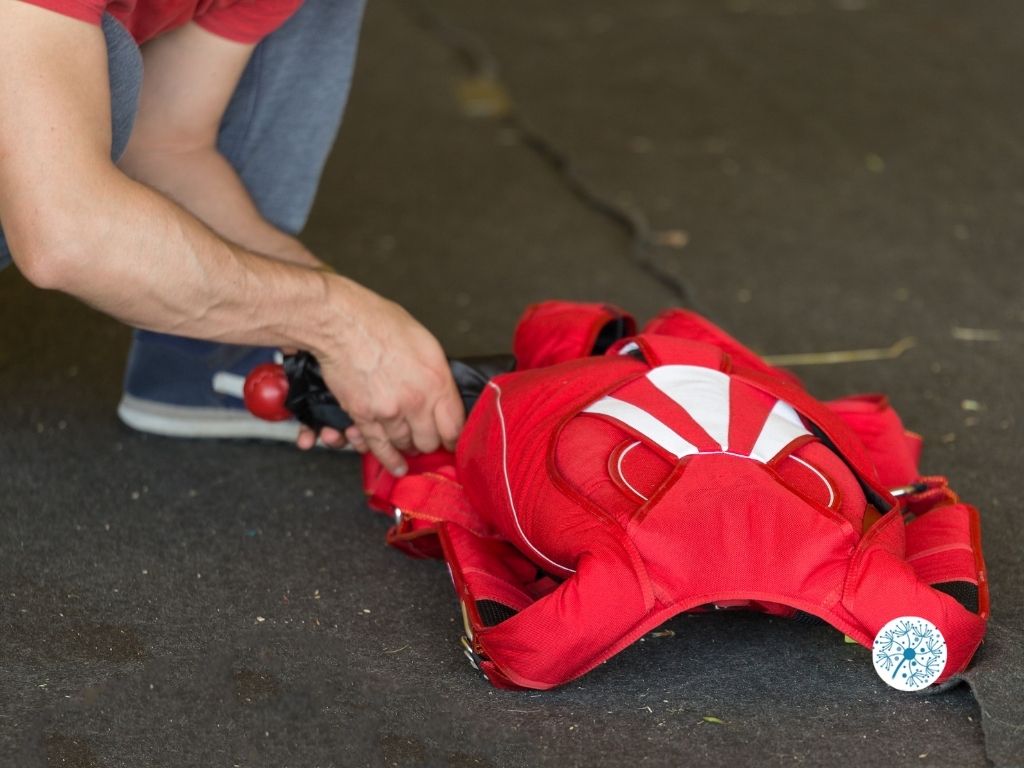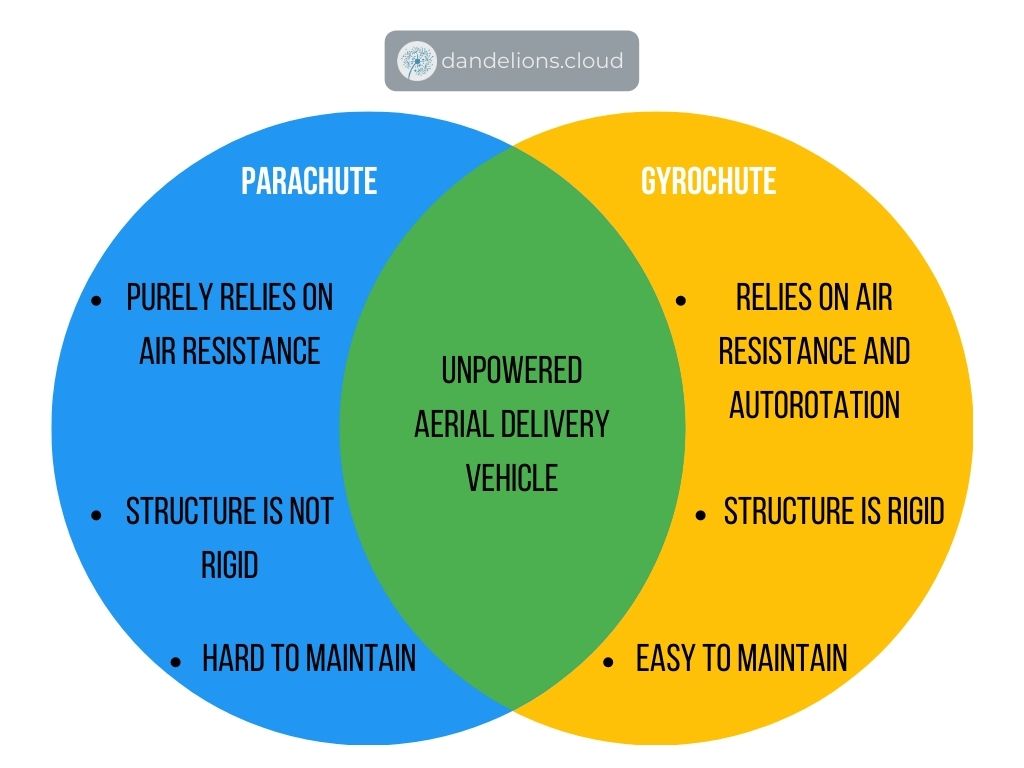Most people would have heard of the aerial vehicle called the parachute. Well, not so much for the Gyrochute. That is why in this article, we are going to explain the similarities and differences between a parachute and a Gyrochute to give you a better understanding of what we are doing here at Dandelions.
First, let us discover what a parachute is and its history...
What is a Parachute?
A parachute is a device for slowing a person's descent or object through the air that consists of a fabric canopy beneath which the person or object is suspended. The name comes from the Latin word "para", meaning "against", and the French word "chute" for "fall". In simple word, a parachute means protecting something or someone against a fall.
History of the Parachute
Humanity first tasted flight with the natural curiosity of embodying a bird. The earliest known human flight story was a Chinese emperor's scout being bound with feathers and gliding 100 metres around 1st century CE. However, kites used for religious ceremonies were found in China dating back to 400 BCE.

Gliders and winged men dominated the people's consciousness until an anonymous manuscript from 1470's Renaissance Italy presented the earliest evidence of a parachute. The sketch shows a man descending with a conical parachute built from wood and cloth.
This set the stage for more aviator discoveries from Renaissance Italy, with Leonardo da Vinci taking the spotlight with a pyramidal parachute design.
The 18th and 19th centuries made the next stages in parachute development, where the first witnessed descent with a parachute was made by Louis-Sébastien Lenormand in 1783, who intended the device to be used to save people trying to escape burning buildings.
He also coined the name of the technology: "para", Latin for "against", and "chute", French for "fall".
In the 20th century, the parachute had been re-engineered using a frameless and compact design for backpack transport and military applications. With the advent of World War I and II, parachute development and use soared, with the technology entering the public spotlight.
In the modern-day, round parachutes are still reserved for military applications and vehicle recovery systems. However, they have mostly been replaced by ram-air parachutes that act as controllable sails and reduce landing injuries by attenuating mid-flight oscillations due to wind or general disturbances.
While parachutes solved the problem of safely dropping heavy payloads from the air, logistics issues remain. These include the requirements of professional packing and consistent maintenance due to the possibility of mould growth or twisting of fibres.

So, now you know what a parachute is and its history, but what about the Gyrochute? What is it?
What is Gyrochute?
The Gyrochute is an unpowered safe descent vehicle that relies on the principle of autorotation, not only air resistance. The name comes from the Greek "gyros" as the combination of the term “ring”, “circle”, and “spiral” and the French word "chute" for "fall".
If the parachute and the Gyrochute both have the word chute in them, how are they similar and or different...?
That is exactly what we are going to find out!
Similarities of the Parachute and the Gyrochute
The parachute and the Gyrochute are both unpowered aerial delivery vehicles. Unlike drones or UAVs that require power, the parachute and the Gyrochute's design allow them to function despite not having power.
Since both the parachute and the Gyrochute are not powered, these vehicles will only descent.
Differences between the Parachute and the Gyrochute
The Parachute relies on air resistance while the Gyrochute relies on air resistance and autorotation
Air Resistance
If you throw a ball up in the air, it will always fall back to the ground. Well, unless of course, it is stuck on a tree. Earth's force, called gravity, is pulling everything towards its centre.
However, have you ever wondered why does crumpled paper fall much faster than smooth paper?
If there were no air, both the crumpled and smooth paper would hit the ground simultaneously. But, the crumpled paper falls much faster because it has a much smaller surface area. Meanwhile, when the paper is smooth, it exposes a large surface to the air beneath it, which slows its descent.
Air resistance caused the slowing of descent. The bigger the surface area, the greater the resistance. The parachute and the Gyrochute both use this second force that works against gravity to function.
Autorotation
The Gyrochute mimics a helicopter's autorotation, a condition during which a helicopter's main rotor is driven only by aerodynamic forces with no power from the engine. Just like the helicopters, autorotation allows the Gyrochute to safely land.The kinetic energy stored in the rotating blades is used to decrease the rate of descent and make a soft landing.
The Parachute's structure is flexible; meanwhile, the Gyrochute's structure is rigid
The parachute's flexible structure means that it can easily be folded and packed. However, this also means that if the parachute fails to open, the item the parachute carries will hit the ground at an unsurvivable speed.
The Gyrochute's rigid structure provides better strength to control and stabilise the vehicle during descent.

The Parachute is hard to maintain
Parachutes pose several hazards:
1. Need to be packed and monitored by professionals, meaning that the short time for the required response for natural disasters is interrupted.
2. Expire and degrade due to mould over time. Once again, the uncertain nature of disasters means that this added issue cannot be tolerated.
3. Pose risks during and after descent as they can be damaged by vast foliage, potentially leaving payloads hanging from a branch.
4. It can be dragged with its payload after landing due to strong winds.
The Gyrochute represents an innovative replacement to the parachute. Once deployed, the Gyrochute does not need to be repacked. Its rigid structure means that the risks of during and after descent are minimised.
Conclusion
In conclusion, the parachute and the Gyrochute are both unpowered aerial delivery vehicle. A parachute relies purely on air resistance, does not have a rigid structure and is hard to maintain. Meanwhile, a Gyrochute relies on air resistance and autorotation, has a rigid structure and is easy to maintain.



